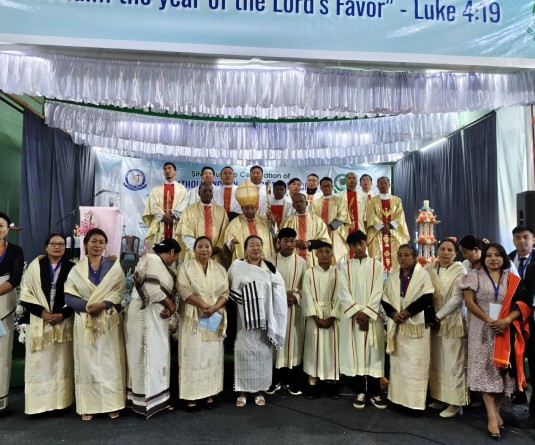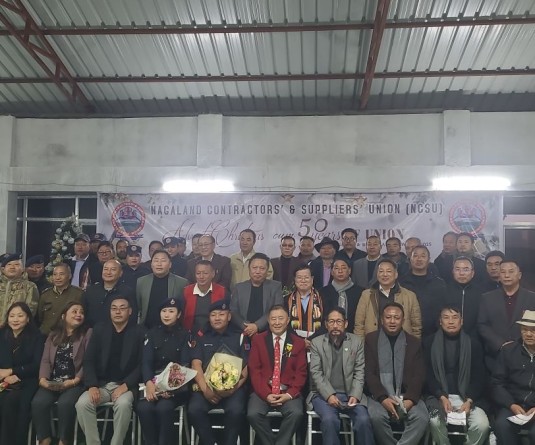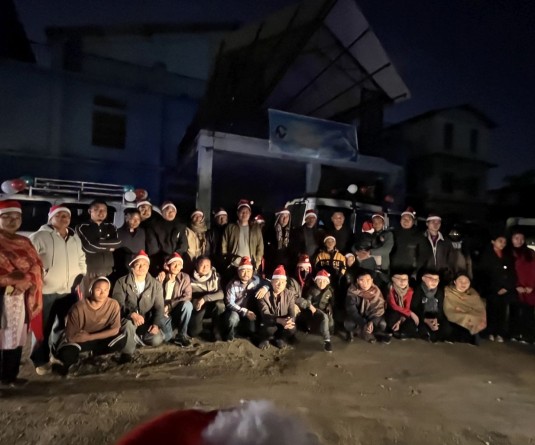
Aheli Moitra
Dimapur | September 15
On the second day of the North East Women Writers’ Meet (NEWWM) at the NEZCC in Dimapur, lengthy discussions on literary ownership, with respect to translations in the North East, emerged. Moushumi Kandali, young experimental fiction writer, translator and art critic from Assam, opened the session with issues vis-à-vis translations.
Focusing on the construction and deconstruction of the North Eastern identity, she said, “If there were enough translations of our culture, on levels other than literature even, there will be more understanding of our culture outside the region which could build more bridges.” And, perhaps, burn some too. Nonetheless, translations are a complex and challenging issue, with the quantum of literature translated from local languages of the region to English remaining low.
Held over September 14-15, NEWWM brought together women writers from the eight states of North East India in order to “share experiences” as poets, novelists, publishers and ideologues. While the sessions on day 1 explored the idea of the personal and political ‘self’ in a language (English) that is global and distant to the North Eastern context, it also highlighted how the same language has provided an outreach to voices that might not have reached a global audience in a more effective manner. Which is where issues of translations entered the fray on day 2.
“It is always emphasized that another language cannot express a local language, and culture, entirely but experiences can still be shared through translations,” said Ms. Kandali. However, the “burden” of culture, race or gender complicates matters. “There are so many well defined, and refined, dialects here that you cannot translate without losing some essence of the original work. Personal or political bias of the translator seeps into the literature and a mood, often unintended by the original author, is caught.”
“From the 1950s to 1965, we were taught to translate from our mother tongue to English and vice versa. It helped us a lot but this doesn’t happen anymore and translation experts are few,” explains Dr. Shanti Chhetri from Sikkim who holds a doctorate in Nepali Literature and has a number of Nepali writings, including translations, to her credit. Sharing an experience of translating a Bengali phrase to Nepali, she got her audience nodding and sharing the difficulty of translating cultures, which need to be handled beyond word-to-word translations, finding idiomatic expressions within the language being translated into.
But experts are few and bad translations, without permission at times, are rampant. “On many occasions, the author has no control over their work in terms of translations,” remarked Dr. Temsula Ao, in line with the experience of many of the other authors. This where Som Kamei, Director of NEZCC, interjected, “The lack of knowledge, in this region, on intellectual property rights has affected writers, musicians and all those dependent on the creative arts for a livelihood.”
Agreeing with Mr. Kamei, Deep Saikia, the Asamiya Editor of National Book Trust, India, voiced the publisher opinion, “A seminar needs to be held to train writers on the changes made by the Parliament to the Copyright Law. You could set up a committee to monitor copyright violations, as is being done in many parts of India.” He spoke on how publishers from India, and the world, are currently scoping for writings from the North East. However, “we don’t have a concept of editing,” pointed out Mr. Saikia, which could considerably better the quality of literature from the North East.
Dr. Asangla Tsudir, Editor of Heritage Publishing House, Dimapur, shared her experience of working locally. “People are interested in the Nagas but we have nothing to offer,” says Dr. Tsudir who started the publishing house in 2008 with the hope that the Nagas will have an opportunity to be represented, through literature, “in our own way”. This is the first year for her that has been encouraging in terms of higher inputs from women writers and gender issues. “Senior writers should encourage more Naga writers to come out with their work.”
How that would be made possible cannot be ascertained as the last session on readings that some participants had especially come to be a part of was attempted to be cut short. Fortunately, the women held their own and read out their quota of literature. Though stirring poems and stories emerged from local language writers, the moderator unfairly picked a “best” of the lot by a poetess proficient with the English language. It put the discussions during the Meet, especially on day 1, in perspective.
The event was summed, and wrapped, up elegantly by Dr. Tilottama Misra.





